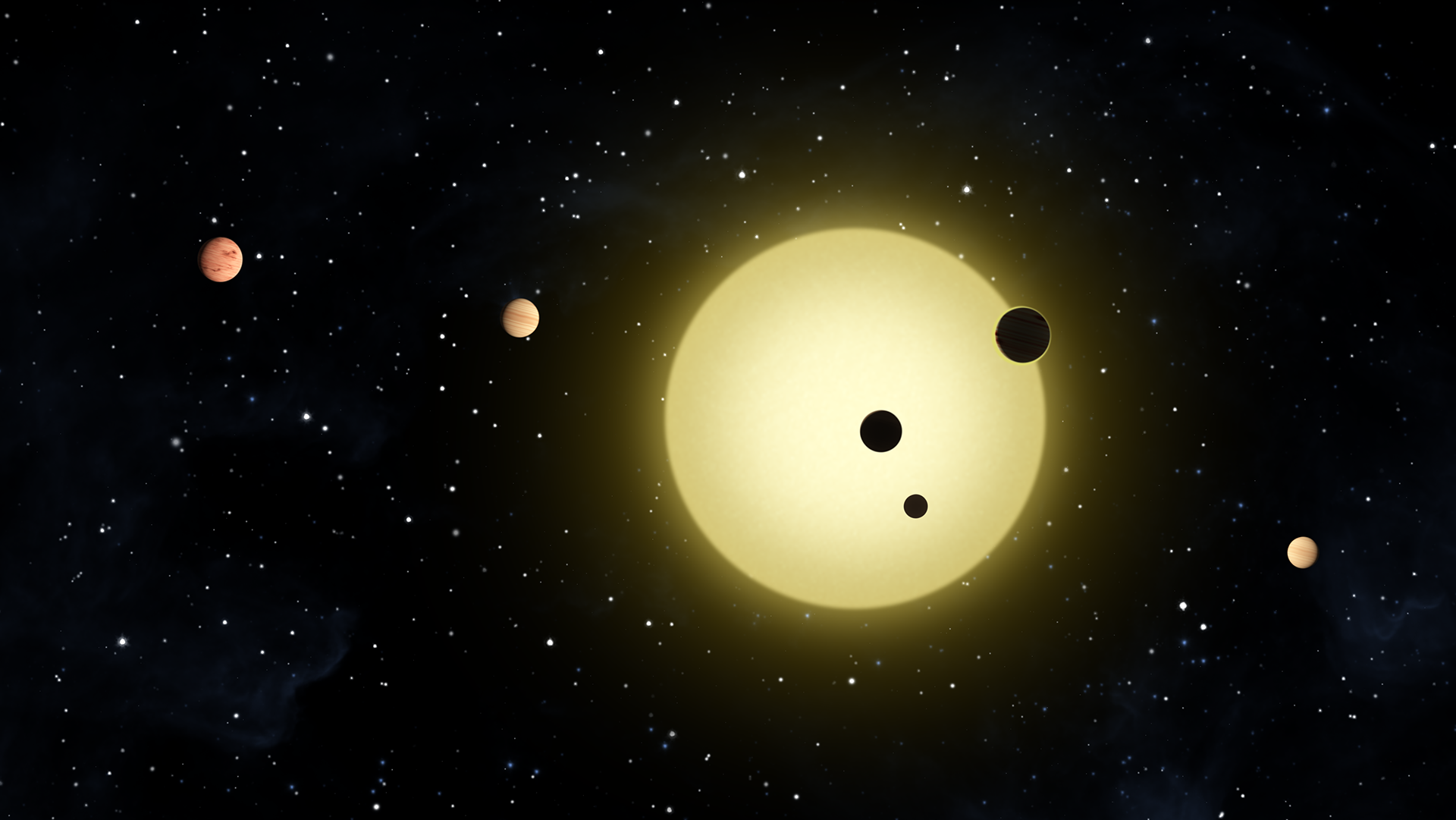Located approximately 2,000 light-years away in the constellation Cygnus, the Kepler-11 system stands as a remarkable testament to the diversity and intricacies of exoplanetary systems. In this article, we’ll investigate the Kepler-11 system, unraveling its fascinating planetary composition, orbital dynamics, and the profound implications it offers for our understanding of planetary formation and system evolution.
The Kepler Mission
Launched by NASA in 2009, the Kepler mission sought to survey a vast portion of our galaxy to identify and characterise exoplanetary systems using the transit method. By monitoring the minute dimming of a star’s brightness as a planet transits in front of it, scientists could discern the presence of distant exoplanets.
The Kepler-11 system represents a compact multi-planet system orbiting a Sun-like star, Kepler-11. This system astounds researchers due to its unique characteristics and the insights it provides into the formation and dynamics of planetary systems.
Kepler-11 hosts at least six confirmed exoplanets, each with its own intriguing characteristics. Let’s explore the specifics of these celestial neighbors:
Kepler-11b:
At the innermost orbit, we encounter Kepler-11b, a Neptune-sized exoplanet with an orbital period of approximately 10 days. This close proximity to its host star subjects the planet to intense radiation and scorching surface temperatures.
Kepler-11c:
Moving outward, we find Kepler-11c, slightly larger than Neptune, completing an orbit around Kepler-11 every 13 days. Its distance from the star places it in the realm of extreme heat, shaping its atmospheric conditions and potential composition.
Kepler-11d:
The third planet from Kepler-11, Kepler-11d, possesses a size roughly twice that of Earth. This exoplanet takes approximately 22 days to complete an orbit, with the nature of its atmosphere remaining a topic of intense scientific investigation.
Kepler-11e:
Kepler-11e, another Neptune-sized exoplanet, resides in a 31-day orbit around its host star. Its composition and atmospheric dynamics continue to captivate scientists, shedding light on the variety of possible planetary environments.
Kepler-11f:
In the fifth position, Kepler-11f showcases a size similar to Neptune and an orbital period of approximately 46 days. Its distance from the host star significantly affects the planet’s climate, atmospheric composition, and potential habitability.
Kepler-11g:
Finally, at the outermost orbit, we encounter Kepler-11g, the largest exoplanet in the system, with a size akin to Saturn. It completes an orbit around Kepler-11 in approximately 118 days, exhibiting its unique dynamics and gravitational interactions within the system.
Orbital Stability
The Kepler-11 system captivates scientists due to its exceptional compactness, with all six planets residing within distances closer to their host star than Mercury is to the Sun in our solar system. This close proximity challenges conventional theories of planetary formation and stability, demanding a deeper understanding of system dynamics and interactions.
To explain the existence of such closely packed planets, scientists propose several hypotheses. One potential explanation is the migration theory, suggesting that planets initially form farther out and subsequently migrate inward due to gravitational interactions with their natal disk or other planets. The Kepler-11 system serves as a crucial testbed for investigating the plausibility of such migration scenarios.
Planetary System Evolution
The Kepler-11 system represents a pivotal case study in our quest to comprehend the rich tapestry of planetary systems throughout the universe. Its compact configuration challenges our preconceived notions, highlighting the tremendous diversity and dynamism inherent in planetary system evolution. By studying the Kepler-11 system and its intricacies, we refine our models, theories, and computational simulations to better comprehend the broader cosmic landscape.
Kepler-11 is reminiscent of our own solar system in many ways, but also has those distinctive shades of ‘alien world’ that fascinate researchers and captivate the imagination of everyone else.
References:
- Lissauer, J. J., et al. (2011). A closely packed system of low-mass, low-density planets transiting Kepler-11. Nature, 470(7332), 53-58.
- Borucki, W. J., et al. (2011). Characteristics of planetary candidates observed by Kepler, II: Analysis of the first four months of data. The Astrophysical Journal, 736(1), 19.
- Winn, J. N. (2014). Exoplanet transits and occultations. Annual Review of Astronomy and Astrophysics, 52, 169-210.
Main image credit: NASA/Ames/JPL-Caltech
I’m the founder of The Average Scientist and also an Astrophysicist, a passionate Science Communicator and elected Fellow of the Royal Astronomical Society.
I regularly speak at various events, including our TAS Talks and theatre shows on subjects such as Astrophysics, Planetary Science and the Evolution of the Universe.








